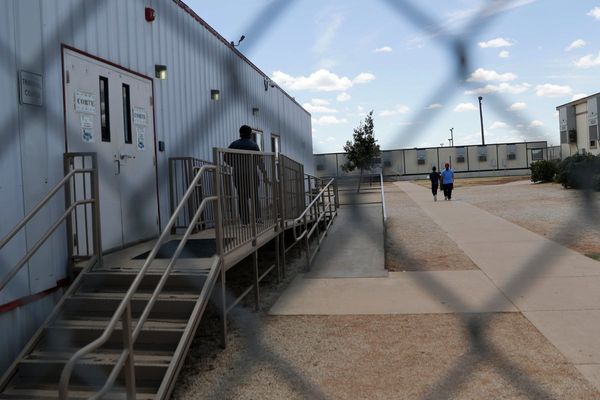Today's consumer price index is expected to show that inflation continued to ease in November, and it may be soft enough to kick-start the next stage of the S&P 500's rally. But investors shouldn't place too much hope on a market-friendly drop in the CPI inflation rate. It may have little impact on Wednesday's Fed meeting or the outlook for monetary policy.
Federal Reserve chair Jerome Powell, in a Nov. 30 speech, highlighted what he called the "most important" measure of inflation, one that has major differences from the CPI or even the core CPI, which excludes food and energy.
The specific inflation rate that Powell says the Fed and Wall Street should focus on comes from the Commerce Department's monthly personal income and spending report, which tracks personal consumption expenditures, or PCE.
Powell's favorite new inflation rate happens to be the most problematic one for the S&P 500. The gauge factors out goods inflation, which is rapidly falling. It also excludes housing inflation, which appears set to fall in 2023 as government data catches up to the stalling growth of market rents.
That leaves only core services other than housing, such as health care, education, hospitality and haircuts. Because price changes for such services are closely linked to wage growth, they provide the best signal of where core inflation is heading, Powell said.
The Fed's new key inflation rate isn't great for the S&P 500 because it puts the focus on the strongest part of the economy: the ultratight labor market. Until the job market cracks, wage growth is likely to remain stubbornly high, and the Fed may hike its benchmark interest rate higher and for longer than markets anticipate.
PCE Inflation Vs. CPI
The PCE covers a much broader range of spending than the CPI, which only reflects out-of-pocket spending. The distinction is especially important when it comes to health care, since a huge share of medical bills get paid by employers, Medicaid and Medicare. While medical care services make up only 7% of the CPI's basket of household purchases, health care services account for nearly 16% of PCE.
Not only that, but the CPI's medical services inflation gauge began falling rapidly in October and that should continue since the source data relating to insurer profits is already in the books. Jefferies chief financial economist Aneta Markowska says health insurance will knock 0.9% off the core CPI inflation rate by the fall of 2023.
Yet health care services inflation as measured in the PCE price index is expected to move higher, due to the lagged impact of wage growth among health care workers. Dallas Fed researchers projected in September that PCE health care inflation would pick up from 2.1% in Q2 to 3.9% in Q2 2023, remaining above 3.5% through 2024.
Rental housing and owner's equivalent rent account for about 31% of the CPI basket, but only 15% of PCE.
There are a bunch of other differences. PCE services includes restaurant spending, while the CPI treats food consumed away from home as a goods purchase.
Another reason to focus on PCE over CPI is that core services excluding housing accounts for just under 50% of total personal consumption expenditures. By contrast, core services minus housing makes up only about 26% of household spending in the CPI.
Fed Chair Powell Shifts The Goal Posts
Powell's suggested focus is really new terrain for the Fed, which has previously emphasized the core PCE, including housing.
That's clear because even finding the data he wants to focus on is a bit of work. The Commerce Department doesn't break out either the spending levels or price changes for core services minus housing. But its "underlying details" tables provide a way to derive the data.
The accompanying chart isn't particularly scary. The inflation rate for core services minus housing, at 4.55% in October, has remained in a narrow range between 4% and 5% for the past year. Still, if this is the Fed's new core inflation rate, it has a pretty long way to fall to get in range of the 2% inflation target.
Powell is trying to refocus the debate over the interest-rate outlook, both inside the Fed and on Wall Street, to put wage growth at the center of policymaking. That makes some sense as the Fed tries to avoid a replay of the 1970s, when it twice cut rates prematurely as unemployment rose but wage growth was still running hot.
However, Powell also may be trying to influence how financial markets react as the CPI inflation rate continues to fall. Through Monday's close, the S&P 500 had rallied 11.6% from its bear-market low on Oct. 12, though it's still 16.8% below its all-time high.
Treasury yields are also off their highs, and the dollar has come down quite a bit against foreign currencies, unwinding some of the impact of Fed tightening. The risk is that the easing of financial conditions will keep wage growth stubbornly high, compelling the Fed to keep hiking until the economy rolls over.
What To Expect From CPI, Fed
The CPI is seen rising 0.3%, with the annual inflation rate easing to 7.3% from 7.7%. Core inflation should slip to 6.1% from 6.3%, with a 0.4% monthly rise.
A more tepid inflation reading on Tuesday would likely keep Monday's rally going. On Monday, the S&P 500 climbed 1.4%, the Dow Jones 1.6% and the Nasdaq 1.3%. S&P 500 futures rose another half-percent ahead of the CPI.
The Fed's policy announcement Wednesday at 2 p.m. is sure to deliver a half-point hike to a range of 4.25% to 4.5%. But new economic projections and chair Powell's news conference may hold a surprise.
Markets are now pricing in a peak for the key Fed overnight lending rate of 5.07% reached in May 2023. New projections will likely show a peak Fed rate of 5.1%, Deutsche Bank says, so that wouldn't cause a ripple.
But there's some risk of a higher projection, especially if the hawks move their estimate of the year-end 2023 rate closer to 6%, while the doves move up to around 5%.
Further, with the hot wage growth in the November jobs report still top of mind for the Fed, there's some risk Powell will indicate another half-point hike is likely on Feb. 1. At the moment, markets see 65% odds of a half-point hike at the first meeting of 2023, but are holding out a good deal of hope for another step down in the Fed's pace of hiking to a quarter-point.







